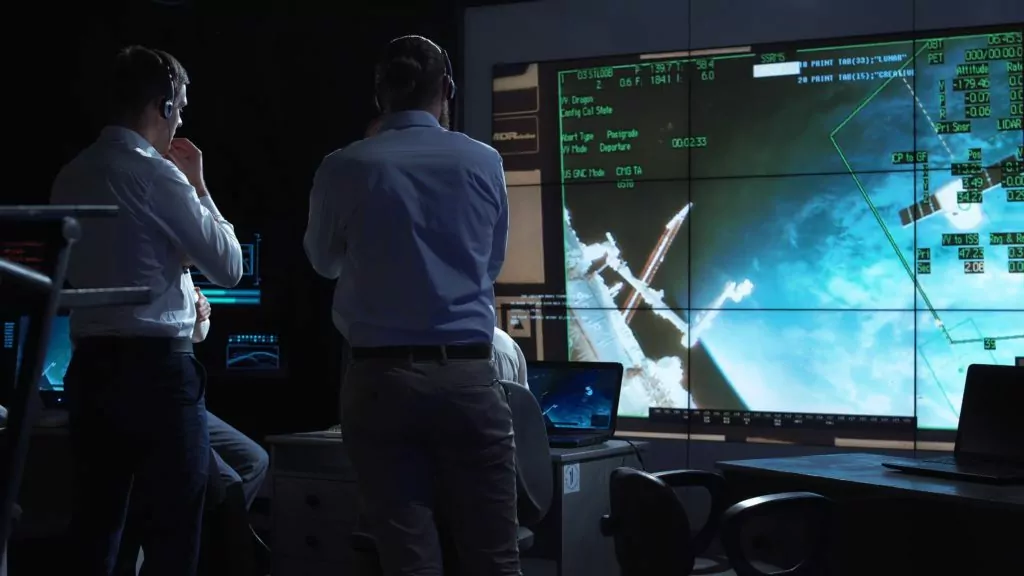Here’s how fast the Internet at NASA is:
The average employee at NASA typically uses the fastest Internet speeds available to consumers.
However, NASA also uses the Energy Sciences Network.
ESnet is a high-speed computer network that serves US department of energy scientists and their collaborators around the world. ESnet can do up to 100 Gbps.
So if you want to learn all about NASA’s Internet speed, then you’re in the right place.
Let’s jump right in!
What About NASA’s Internet Speed?
We’re lucky to live in an era when almost everyone has at least a “pretty good” Internet connection.
And, if you’re passionate about your Internet and you like to have a powerful connection, you might be enjoying fiber optic Internet with download speeds of up to 10 Gbps.
You might also be wondering how close that is to government-level speeds and the connections that organizations like NASA use to send and receive their data.
Apparently, not that close. Government organizations (especially those that deal with information sciences and computing) have incredible speeds at their disposal.
How incredible?
Let’s find out!
Does NASA Really Have an Internet Speed of 91 Gigabyte?
Rumor has it the Internet speed at NASA is 91 gigabytes per second. While not entirely untrue, this piece of information is misleading.
The first issue is that Internet speeds are measured in Gbps (gigabits per second), not gigabytes per second.
One gigabyte equals 8 gigabits, which would then mean that NASA has a 728 Gbps connection—which is impossible, even by space-science standards.
The second issue is that this isn’t standard, everyday Internet that NASA employees use for their tasks.
The recorded speed resulted from a single disk-to-disk transfer between their SC13 supercomputer and NASA’s Servers in Goddard back in 2014. This was done in part to test the limits of data transfer and focus on achieving 100 Gbps data flows over WAN (Wide-area networks).
In other words, NASA does have access to extreme Internet speeds. But, the 91 Gbps information is slightly misleading because it’s not something they use daily.
The average NASA employee surfing the Internet will not be using this ridiculous speed—it’s reserved for huge data transfers and other serious endeavors.
The infrastructure they used to achieve this speed is also not expected from your Internet service provider. For these types of procedures, NASA uses something called ESnet—a.k.a. “The Shadow Internet.”
What Is the Shadow Internet Called ESnet`?
While it may sound like something out of a Batman movie, the Shadow Internet is a high-speed computer network used by DOE (US Department of Energy) scientists and related organizations from all over the world.
It’s used to facilitate collaborative research and allow for uninterrupted, high-speed, large-scale data transfers (like the one in the experiment above).

The real name of the “Shadow Internet” is ESnet (Energy Sciences Network). It was started in 1986, quickly traversing the entire North American continent and connecting research centers across the United States.
In 2014, ESnet deployed four connections between the US and Europe: two 100 Gbps connections and one 40 Gbps connection.
ESnet 5
The current network is known internally as the ESnet 5. It serves the entirety of the DOE national laboratory system, along with its supercomputing centers.
Think of it this way: the larger the file, the more bandwidth you need to send it as quickly as possible. That’s just common sense. Now consider that GTA V takes up more than 70 GB of disk space.
The game is huge:
- You have a large city to explore.
- The graphics are good.
- There are a lot of 3D models, sound effects, cutscenes, actions to take.
- You name it.
Now imagine the file sizes NASA deals with. For example, the NCCS (NASA Center for Climate Simulation) can store 37 petabytes of data. That’s 32 million gigabytes!
NASA works with world-scale simulations, enormous telescope images, and other data whose size is almost impossible to grasp. These files need immense speeds to, say, transfer a petabyte of data from Denver to London.
So, while 100 Gbps speeds have been around for a while, NASA is unique in that it has the chance to achieve this theoretical maximum.
More likely than not, this is due to NASA’s infrastructure, both in terms of computing power on the receiving end and fiber optic technology.
With 100 Gbps, you would be able to download a whole hard disk drive’s capacity of 1 TB (1000 Gigabytes) in less than two minutes. For comparative purposes, we would be able to download a video game of 30 Gb in two seconds.
ESnet 6
NASA is currently dealing with a similar problem that the general population is often faced with: increasing file sizes.
GTA V: a decade ago, it would have been unimaginable that a single PC game would require so much storage.
Today, GTA V isn’t even that challenging when you have games like Destiny 2 and Call of Duty: Modern Warfare takes up a whopping 165 GB and 231 GB, respectively.
Increasing game file sizes follow the advances in video game graphics and computing power.
NASA is dealing with a similar problem: their telescopes are now capable of creating highly precise imagery. Their supercomputers are running simulations in larger resolutions, and their sensors are gathering data with better speed and sensitivity.

All of this contributes to more data which, in turn, requires more bandwidth. That’s why NASA is developing the sixth generation of their network—ESnet 6, scheduled to be finished in 2023.
What Is the Fastest Internet Speed Ever Measured?
Funnily enough, these amazing speeds are nothing compared to record-breaking speeds achieved in perfect conditions.
Right now, the fastest Internet speed ever measured is 178 Tbps (that’s terabits per second) which is fast enough to, in theory, download the entire Netflix library in the blink of an eye. Scientists in the UK and Japan achieved this speed by
The engineers found a way to pretty much “squeeze” more information through fiber cables to achieve these speeds. Since most of these cables can achieve 4.5 THz bandwidth, the scientists raised this ceiling to an amazing 16.8 THz.
The interesting thing here is the fact that this experiment uses the same fiber optic technology that’s already available in many countries.
However, to replicate anything near these results in the real world, we would need upgrades to current amplifiers that our ISPs use.


